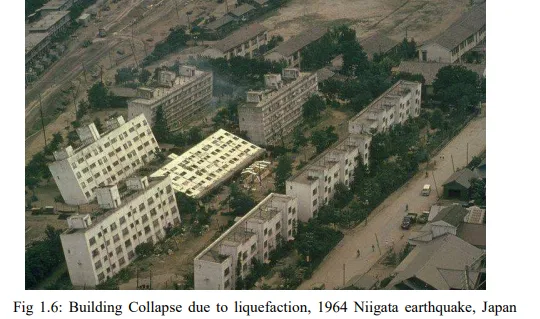
Introduction to Engineering Seismology
Introduction
· The Earth beneath our feet usually feels solid and firm. Yet a million times each year (an average of once every thirty seconds) somewhere around the world the ground shakes and sways. We call this an earthquake.
· Most Earthquakes are too small to be noticed by people; only sensitive scientific instruments record their passage. But hundreds of earthquakes every year are strong enough to change the face of the land and are capable of causing injuries, deaths and property damage.
· Seismic hazards are those associated with earthquakes. The earthquake engineering involves the identification and mitiga
Types of Earthquake/Seismic Hazards
The effect of ground shaking - The first main earthquake hazard (danger) is the effect of ground shaking. Buildings can be damaged by the shaking itself or by the ground beneath them settling to a different level than it was before the earthquake (subsidence). When an earthquake occurs seismic waves will generate and it will radiate away from the source and travels rapidly through the earth’s crust. When these waves reach on earth’s surface, it will produce shaking which will remain for seconds to minutes. The strength and duration of shaking of a particular place depends upon the size and location of the earthquake and the characteristics of the site. All the sites near the source of large earthquake will produce huge damage. In fact, we can consider ground shaking as the most important hazard because all other hazards are occurring due to the ground shaking. Figure 1.1 shows the damage of buildings due to ground shaking
Introduction to Engineering Seismology

Fig 1.1: Ground storey collapse of a 4-storey building at Bhuj in Gujarat, India.
· Ground displacement - The second main earthquake hazard is ground displacement (ground movement) along a fault. If a structure (a building, road, etc.) is built across a fault, the ground displacement during an earthquake could seriously damage or rip apart that structure. Faulting is the surface expression of the differential movement of blocks of the Earth’s crust. Faulting can be a simple “mole track” lateral movement, or a major vertical scrap, or may not even be visible. Figure 1.2 shows typical ground displacement due to earthquake

· Flooding - An earthquake can rupture (break) dams or levees along a river. The water from the river or the reservoir would then flood the area, damaging buildings and maybe sweeping away or drowning people. The first failure of a
dam due to earthquake reported in the literature is Augusta dam, GA, during the 1886 Charleston, SC earthquake.
· Fire - The fourth main earthquake hazard is fire. These fires can be started by broken gas lines and power lines, or tipped over wood or coal stoves. They can be a serious problem, especially if the water lines that feed the fire hydrants are broken, too. For example, after the Great San Francisco Earthquake in 1906, the city burned for three days. Most of the city was destroyed and 250,000 people were left homeless. Figure 3 shows burning of san Francisco due to earthquake.

· Land slide – Earthquakes can cause the failure of soil and rock slopes, particularly those that are marginally stable to begin with. The most common type of landslides triggered by seismic events include rock falls, soil slides, and rock slides on relatively steep slopes that are covered with disaggregated soil and rock. The debris from such failures can cut off roads and streams, and it can damage buildings, bridges and other structures. Loss of life due to landslides is a common occurrence. Of special concern are slope failures that progress quickly. A tragic example is the Huascaran Mountain landslide that occurred as a result if the 1970 Peru earthquake. It buried the town of Yungay and part of the town of Ranrahirca, with a loss of life exceeding 18,000. Figure 1.4 shows typical landslide and slop failure due to 2005 pakistan earthquake.

· Liquefaction – is the temporary loss of soil strength and fluidization that occurs in certain saturated granular soils due to seismic shaking, represents a significant hazard in coastal areas and other locations with a high water table. The reduction in bearing capacity that accompanies the process of liquefaction can lead to the sinking of buildings, bridges and other heavy structures, often with little or no damage to the structure itself as shown in Figures 1.5 and 1.6 below. Liquefied beds can sometimes be detected by the presence of surface sand boils, formed as mixtures of soil and water squeeze out of ground, with the soil residue deposited nearby.

